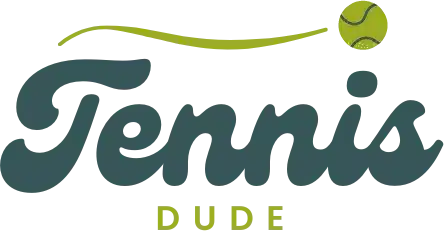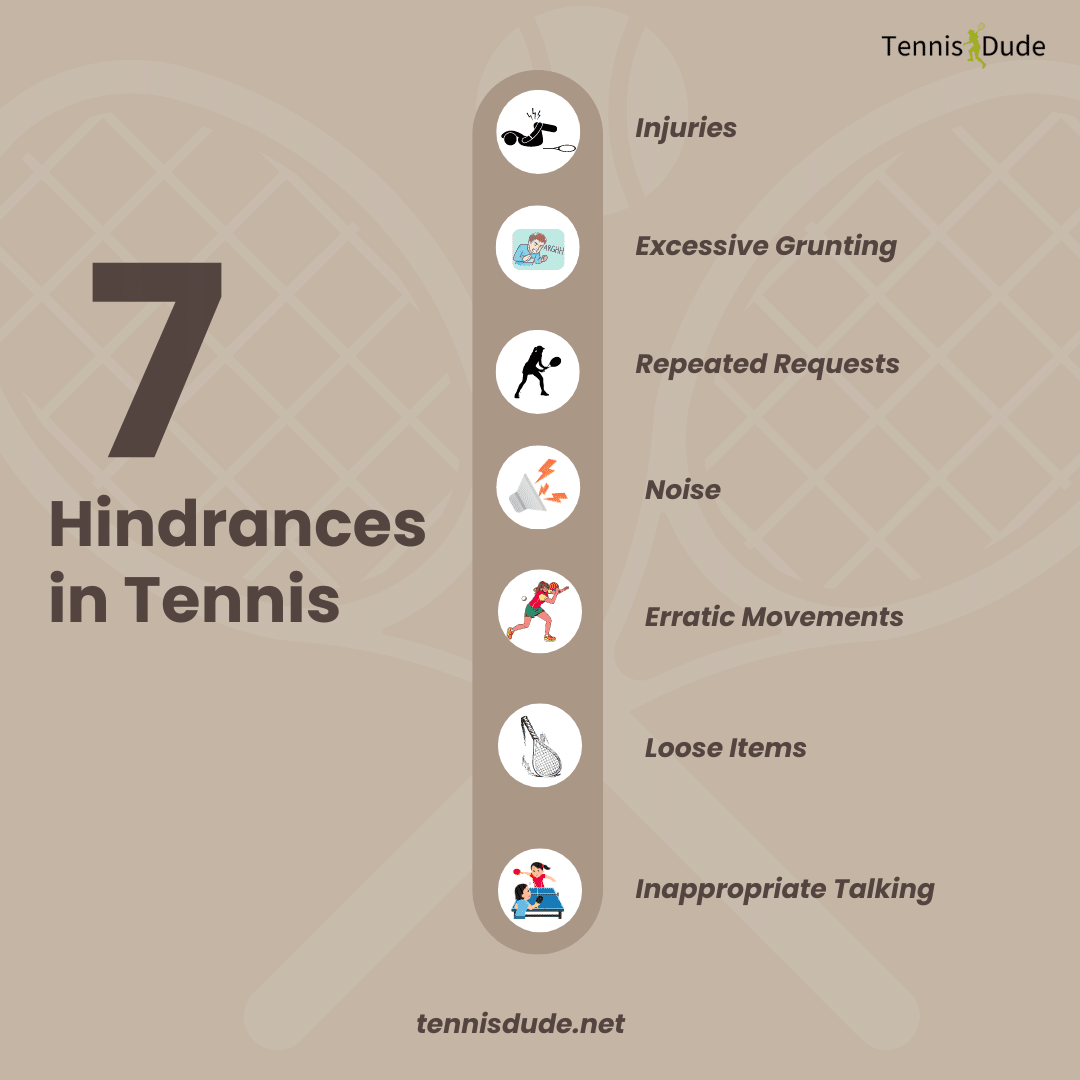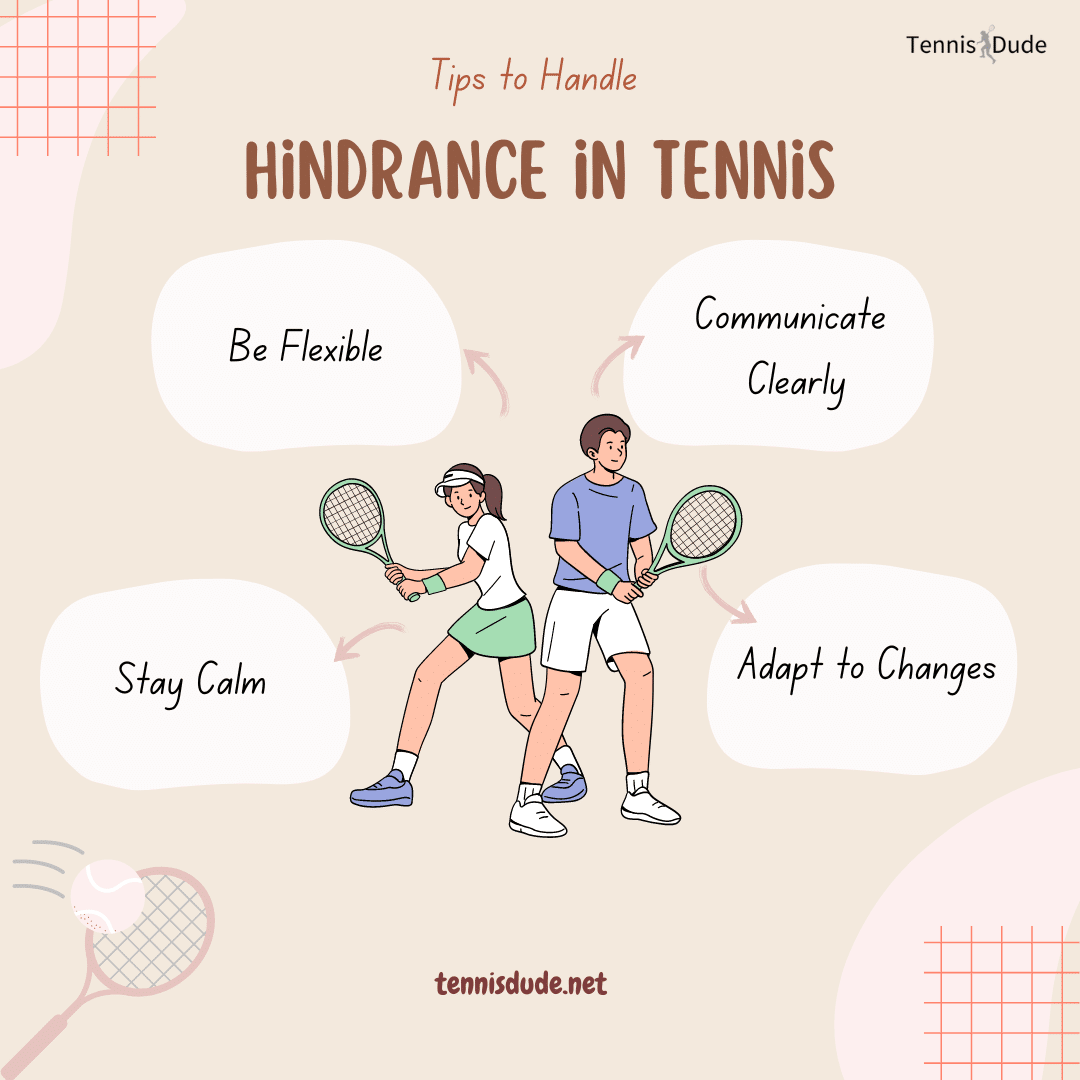Table of Contents
Imagine you are about to execute a perfect shot, all set to ace your game, when suddenly, a disruption catches you off guard on the court. No matter how hard you try to lock your eyes on the ball, you might lose your stance against the opponent, resulting in a failed attempt to save a shot. This is a widespread phenomenon that occurs on the tennis court and is referred to as a hindrance. In tennis, the hindrances are meant to distract you, resulting in you losing your focus and point, too. Although there are many types of hindrances when it comes to playing tennis, in this article guide, we will cover some of the widely known hindrances. We will also focus on how these hindrances impact the game and how to tackle them effectively.
What is Hindrance in Tennis?
Do you want to excel on the court, achieving the highest level of precision and strategy? It’s time to uncover the concept of hindrances.
In tennis, any outside influence or distraction that prevents a player from carrying out their game plan is referred to as a hindrance. The International Tennis Federation (ITF) defines a hindrance as anything that interferes with a player’s concentration or ability to play during a point. In addition, the chair umpire must make a hindrance call to recognize and handle these interruptions.
Categories: A Hindrance in tennis falls into two primary categories:
- Intentional Hindrances: These entail deliberate hindrances intended to obstruct the opponent’s play. Intentional obstructions carry a fine since they are deemed unsportsmanlike.
- Unintentional Hindrances: Outside-of-the-player variables affect the game, including background noise or unintentional equipment failure. If a player is hindered during play, a line judge might make a hindrance call due to an unintentional hindrance. Inadvertent obstacles are typically treated differently and are more likely to be dealt with by authorities.
Seven Different Tennis Hindrances
Having discussed the concept and meaning of hindrance in tennis, we will cover different types to dig deep into the concept.
1. Injuries
This is the first type that seems to have a huge impact on the game:
- Impact: A player’s performance can be greatly impacted due to the physical discomfort or suffering that injuries might cause. A player with an injury may find it difficult to use their strokes properly, which could change the game’s dynamics. Even if a player has to take a medical break from play, they must return to the game as soon as possible to prevent needless delays. Furthermore, a player’s game can suffer greatly if their inability to serve correctly causes them to hit the net or commit a double fault.
- Rules: In the event of a major injury, players are entitled to a medical timeout per ITF regulations. This enables them to get care and momentarily recover. But in order to minimize needless delays, players must get back into the game right away following the timeout. In addition, a player could lose the point if they are hindered by an injury during a play.
2. Excessive Grunting
Many players throughout history have faced hindrance calls due to excessive grunting.
- Impact: While grunting is a normal vocalization during forceful strokes, grunting too much might become counterproductive. Although grunting might not always be done on purpose, it can nevertheless cause an opponent to lose focus and become less focused on the game. For example, the chair umpire could give a hindrance call in tennis if a player, like Novak Djokovic, grunts too much.
In this article, you can check out details on why hindrance was called on Djokovic during a tennis match.
- Rules: The tournament rules for this hindrance in tennis might restrict the permissible noise levels. If an opponent thinks that the grunting is too loud, they can bring the matter up with the line judge. Depending on the rules of the competition, the judge may decide to take appropriate action.
3. Repeated Requests
Imagine putting all your efforts into the game to ace that one shot and getting distracted by the opponent’s repeated requests. Repeated requests disrupt the flow of the game.
- Impact: Making repeated requests for timeouts, breaks, or other disruptions can throw off the game’s rhythm and cause the opponent to become less focused. Although these disruptions could impact the game’s momentum and fairness, they must be handled in accordance with the regulations. In addition, there might be consequences if a player consistently asks to stop play or makes needless interruptions.
- Rule: Players’ requests are accepted, although frequent pauses might result in penalties. In addition, it’s critical that participants respect the interruption policies and restrict their requests to those that are truly necessary. Making thoughtful use of breaks can help maintain productivity and prevent fines for unneeded delays.
4. Outside Noises
In my opinion, this might be the biggest distraction and hindrance in tennis.
- Impact: A player’s focus and concentration can be hampered by outside noises like construction sounds, traffic, or crowd disturbances. Jannik SinneR, for instance, could do worse if background noise distracts him. Although some noise will always be there, too many distractions can impair a player’s focus.
- Rules: It is recommended that players notify the line judge or tournament organizers about any major external noise issues. If there is a significant disruption, the officials might choose to postpone or cancel the game. In addition, players can work on mental strategies to maintain concentration in the face of slight outside disturbances.
5. Erratic Body Movements
The next hindrance in the tennis game is body movements, which lead to interrupting the players.
- Impact: Players, coaches, or spectators might trigger disruptions with their abrupt or erratic body movements. For example, a coach could give a hindrance call during a tennis match if they move suddenly during play. Although these maneuvers might not always be deliberate, they can deflect criticism and break the opponent’s concentration.
- Rules: Participants and their companions must maintain composure and refrain from needless movements that can divert opponents. A player must notify the chair umpire of any purposeful and disruptive body motions made by an opponent.
6. Inappropriate Talking
This can distract you from the task at hand, and you might lose a point.
- Impact: Talking by players, coaches, or spectators during a point can cause distractions and impede the game’s progress. For instance, loud discussion by onlookers could potentially divert the players’ attention. In addition, remarks or discussions by the opponent during play may disrupt their concentration.
- Rules: To prevent distractions, conversations should only take place during breaks or in between points. Furthermore, spectators should be informed of appropriate behavior during play to ensure that their actions do not affect the game. Effective communication with the line judge can maintain a focused playing atmosphere and control inappropriate speech.
7. Loose Items
Last but not least, loose items impact the overall performance of the player.
- Impact: Disruptions might arise from clothes or equipment that come loose or fall onto the court. A player’s hat or a piece of clothing, for example, may fall onto the court and momentarily distract their opponent, disrupting the flow of play. Although this might not always be done on purpose, it can still affect the game.
- Rules: In order to reduce the possibility of lost equipment causing disturbances, players should secure their equipment before the competition. The line judge or chair umpire could allow brief pauses to handle the situation if drift things do fall onto the court. Reducing delays is critical to keeping the game moving at a fair pace.
How to Handle Hindrances in Tennis
You can effectively tackle hindrances in tennis and be better at your performance.
1. Be Ready and Flexible
- Mental Prep: Build mental toughness with focus exercises like mindfulness and visualization. This helps you stay sharp when distractions arise.
- Physical Prep: Stay in top shape to handle sudden interruptions during play. Good conditioning prepares you for the unexpected.
2. Communicate Clearly
- Speak Up: Report any major disturbances to the umpire or officials clearly and promptly. Clear communication keeps the game running smoothly.
- Know the Rules: Understand the proper procedures for reporting issues. Being familiar with the rules prevents unnecessary delays.
3. Stay Calm
- Keep Your Cool: Use deep breathing, visualization, or positive self-talk to stay composed. Practice these regularly so you can react calmly under pressure.
- Set a Routine: Create pre-point routines to stay centered and focused during the match.
4. Adjust Your Strategy
- Adapt Your Game: If outside noise or distractions bother you, shift your rhythm or focus on breathing to stay in the zone.
- Stay Flexible: Be ready to adjust your tactics quickly to maintain your competitiveness, no matter what comes your way.
Conclusion
As we come to the end of this discussion, handling hindrances during a tennis match is paramount for seamless game flow. If you understand the type of hindrances and how they impact the game, you can be more focused and mindful playing the game.




